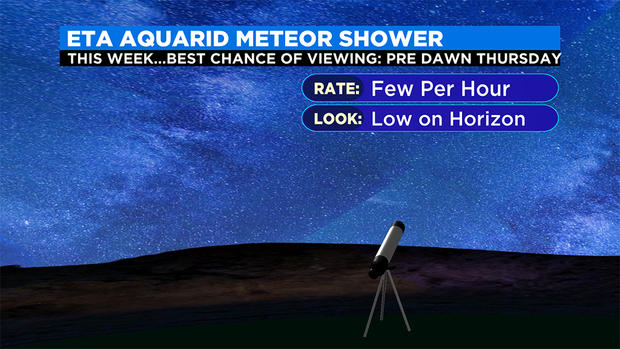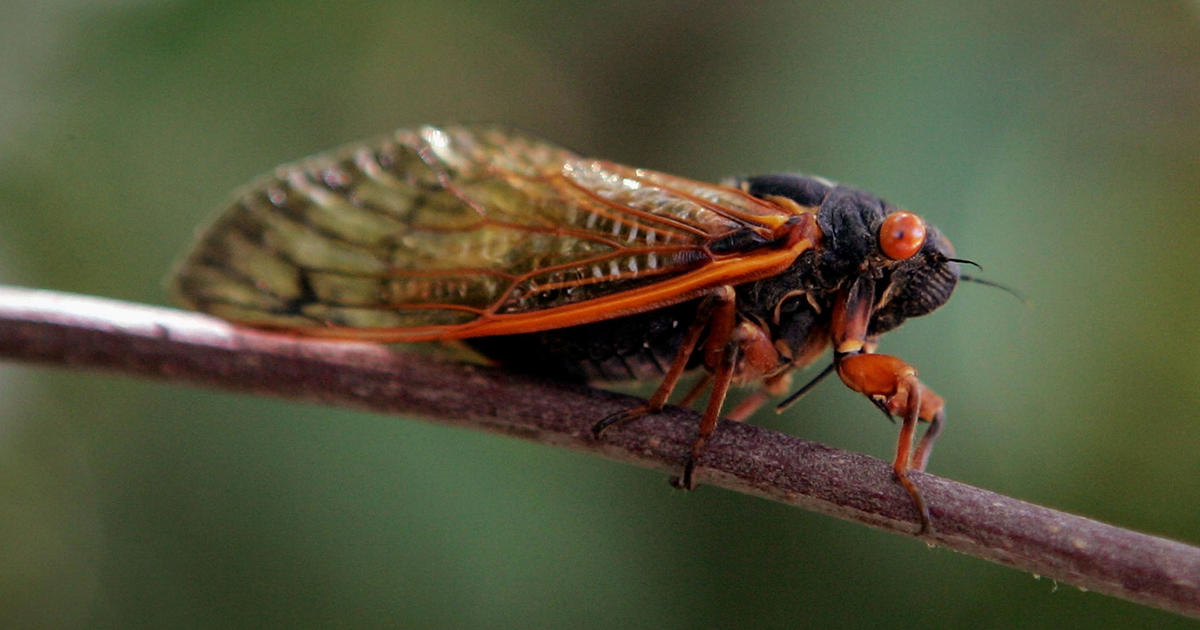Eta Aquarid Meteor Shower Peaks This Week: Will We See Halley's Comet Remnants?
BOSTON (CBS) -- We are all familiar with Halley's Comet. Some of us may even remember its last close pass by Earth in 1986. And while many of us won't be around for its next pass in the summer of 2061, we get two chances each year to see some of its remnants. Our first chance this year comes this week, as Earth will be passing though the dusty trail left behind decades ago by the infamous comet, leading to what we call the Eta Aquarid meteor shower.
There is some good news and bad news with regards to your opportunity to see some "shooting stars" this week.
Let's start with the good…
-The Moon is in a waning crescent phase, so there will be very little moonlight to dampen the show.
-The peak for us in the Northern Hemisphere is very early Thursday morning, say around 2-4 a.m. . . . and it just so happens that in this cloudy/rainy week that timeframe should be mainly clear!
Now for the bad news…
-The Eta Aquarids emanate from the constellations Aquarius, which doesn't rise above the eastern horizon until very late at night (after 2 a.m.), and it never gets very high above our horizon in the northern hemisphere. So for those in the southern hemisphere, the Aquarids are a terrific show. . . for us, not so much.
-Not only will the show be late and possibly conflict with some early morning light, but we are talking about just a handful of potential meteors per hour at best.
So is it worth losing sleep over and stepping outside in the wee hours of Thursday morning? Well I guess that depends. . . are you a gambler?
There is a very good chance of seeing nothing, especially if you don't have a clear view of the eastern horizon. However, there is a chance of seeing a few "Earthgrazers", and if you happen to catch one just right, it will be well worth the effort. Given the very low angle to the horizon at which the Aquarids will be seen in our latitude, there is a chance of a couple "skimmers". These horizon hugging shooting stars will often times leave a very colorful and long trail behind them, but again, they are few and far between!
The good news is, if you don't catch part one of the Halley's Comet annual meteor show, you get a much better shot in October, otherwise known as the Orionids. Weather permitting, that show is typically mush more viewer friendly in our part of the world.




